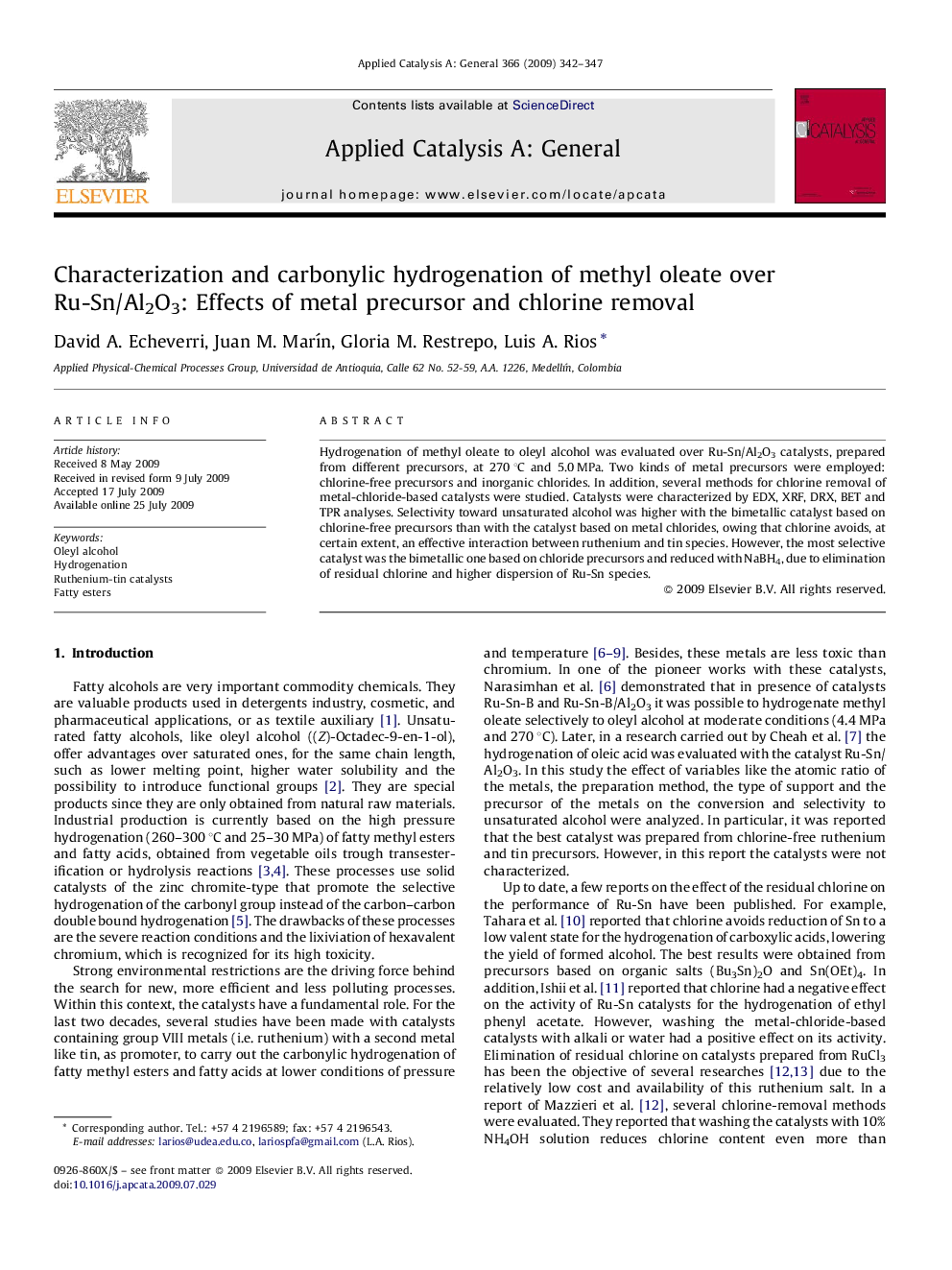| Article ID | Journal | Published Year | Pages | File Type |
|---|---|---|---|---|
| 42673 | Applied Catalysis A: General | 2009 | 6 Pages |
Hydrogenation of methyl oleate to oleyl alcohol was evaluated over Ru-Sn/Al2O3 catalysts, prepared from different precursors, at 270 °C and 5.0 MPa. Two kinds of metal precursors were employed: chlorine-free precursors and inorganic chlorides. In addition, several methods for chlorine removal of metal-chloride-based catalysts were studied. Catalysts were characterized by EDX, XRF, DRX, BET and TPR analyses. Selectivity toward unsaturated alcohol was higher with the bimetallic catalyst based on chlorine-free precursors than with the catalyst based on metal chlorides, owing that chlorine avoids, at certain extent, an effective interaction between ruthenium and tin species. However, the most selective catalyst was the bimetallic one based on chloride precursors and reduced with NaBH4, due to elimination of residual chlorine and higher dispersion of Ru-Sn species.
Graphical abstractHydrogenation of methyl oleate to oleyl alcohol was evaluated over Ru-Sn/Al2O3 catalysts, prepared from different precursors, at 270 °C and 5.0 MPa. The best catalysts were obtained either from chlorine-free sources or after elimination of residual chlorine on metal-chloride-based catalysts. However, the most selective catalyst was obtained by NaBH4 reduction of catalyst prepared from chlorine precursors.Figure optionsDownload full-size imageDownload as PowerPoint slide
